Condition
Acne Treatments London.
WHAT IS ACNE?
Acne is a very common skin condition affecting 85% of 15-24 years old in UK. This is a time when teenagers are wanting to look their best and even relatively mild acne can often cause great distress and damage to self-esteem and self-confidence.
Although acne often appears during teenage years, for some people acne and acne scarring can be a continuing problem well beyond their twenties.
Once you reach your mid-20s, acne often clears up by itself, especially in men. However, for some young people acne is a serious, ongoing problem that needs medical assistance for the physical and psychological issues acne can sometimes cause.
Acne occurs when a hair follicle and its associated oil (sebaceous) gland become blocked and inflamed. This provides an ideal environment for bacteria to grow and cause the skin to become irritated, red and tender.
People with acne often have larger sebaceous glands and produce more sebum than people with unaffected skin. Sebum is a waxy/oily substance that prevents the hair and skin from drying out.
Blackheads, whiteheads, pimples (zits) and cysts develop on the face, neck, back, chest and shoulders because this is where oil glands are largest and most active.
The most common places to experience acne are the face, neck, back and chest.
Face acne – most people who experience acne would have some acne on the face, typically across the cheeks and forehead
- Neck acne – some people who experience acne will have some acne develop on their neck
- Back acne – more than half of people who experience acne will be affected by some back acne
- Chest acne – only 15% of people with acne will have some acne on the chest
TYPES OF ACNE
Non-Inflammatory Acne
With this type of acne, also called comedonal acne, you won’t find any big, angry, red pimples. Instead, you’ll see little blackheads and whiteheads, generally where your face is oilier, like the T-zone area (but also your chest and back). This type of acne is caused by the clogging of the pilosebaceous units (hair follicles) of the skin. Now, the difference between whiteheads and blackheads:
- Whiteheads: Also called closed comedones, this type appears as little white bumps because of the trapped dead skin cells and sebum. Whiteheads are covered by a thin layer of skin, and the contents are not exposed to the air, so they appear white or yellowish, which is the default colour of oil and dead skin cells.
- Blackheads: On the contrary, this type is best described as open comedones that expose the trapped oil and dead skin cells to the air. Oxygen in the air reacts with the trapped substances (a process called oxidation) and makes the pimple look black (hence the name).
Inflammatory Acne
Inflammatory acne is often caused by an overgrowth of a bacteria that lives on the skin called P. acnes that increases inflammation. This type of acne can appear as papules, pustules, nodules, and cysts.
- Papules: These are tender bumps with redness and swelling that have no visible fluid (in other words, no whitehead) and are usually less than 5 mm (think smaller than the size of a pencil eraser). Papules are often caused by dead skin cells clogging the pores and increasing inflammation.
- Pustules: Pustules are inflamed lesions with a visible whitehead that may be tempting to squeeze (but it’s a good idea not to), and they’re usually raised 1 to 5 mm. Pustules are often caused by the overgrowth of P. acnes.
- Nodules: When you think of a nodule, think large, firm, red bumps. These extend deeper than a papule and are notoriously painful.
- Cysts: Another painful form of inflammatory acne, cysts are the deep kind of acne under the skin that seems to take forever to go away. Cystic acne as highly inflamed and/or draining acne nodules. Cysts can have more of a genetic or hormonal origin.
CAUSES OF ACNE
Four main factors cause acne:
- Excess oil (sebum) production
- Hair follicles clogged by oil and dead skin cells
- Bacteria
- Inflammation
Acne typically appears on your face, forehead, chest, upper back and shoulders because these areas of skin have the most oil (sebaceous) glands. Hair follicles are connected to oil glands.
The follicle wall may bulge and produce a whitehead. Or the plug may be open to the surface and darken, causing a blackhead. A blackhead may look like dirt stuck in pores. But actually the pore is congested with bacteria and oil, which turns brown when it’s exposed to the air.
Pimples are raised red spots with a white center that develop when blocked hair follicles become inflamed or infected with bacteria. Blockages and inflammation deep inside hair follicles produce cyst like lumps beneath the surface of your skin. Other pores in your skin, which are the openings of the sweat glands, aren’t usually involved in acne.
Certain things may trigger or worsen acne:
- Hormonal changes. Androgens are hormones that increase in boys and girls during puberty and cause the sebaceous glands to enlarge and make more sebum. Hormone changes during midlife, particularly in women, can lead to breakouts too.
- Certain medications. Examples include drugs containing corticosteroids, testosterone or lithium.
- Diet. Studies indicate that consuming certain foods — including carbohydrate-rich foods, such as bread, bagels and chips — may worsen acne. Further study is needed to examine whether people with acne would benefit from following specific dietary restrictions.
- Stress. Stress doesn’t cause acne, but if you have acne already, stress may make it worse.



